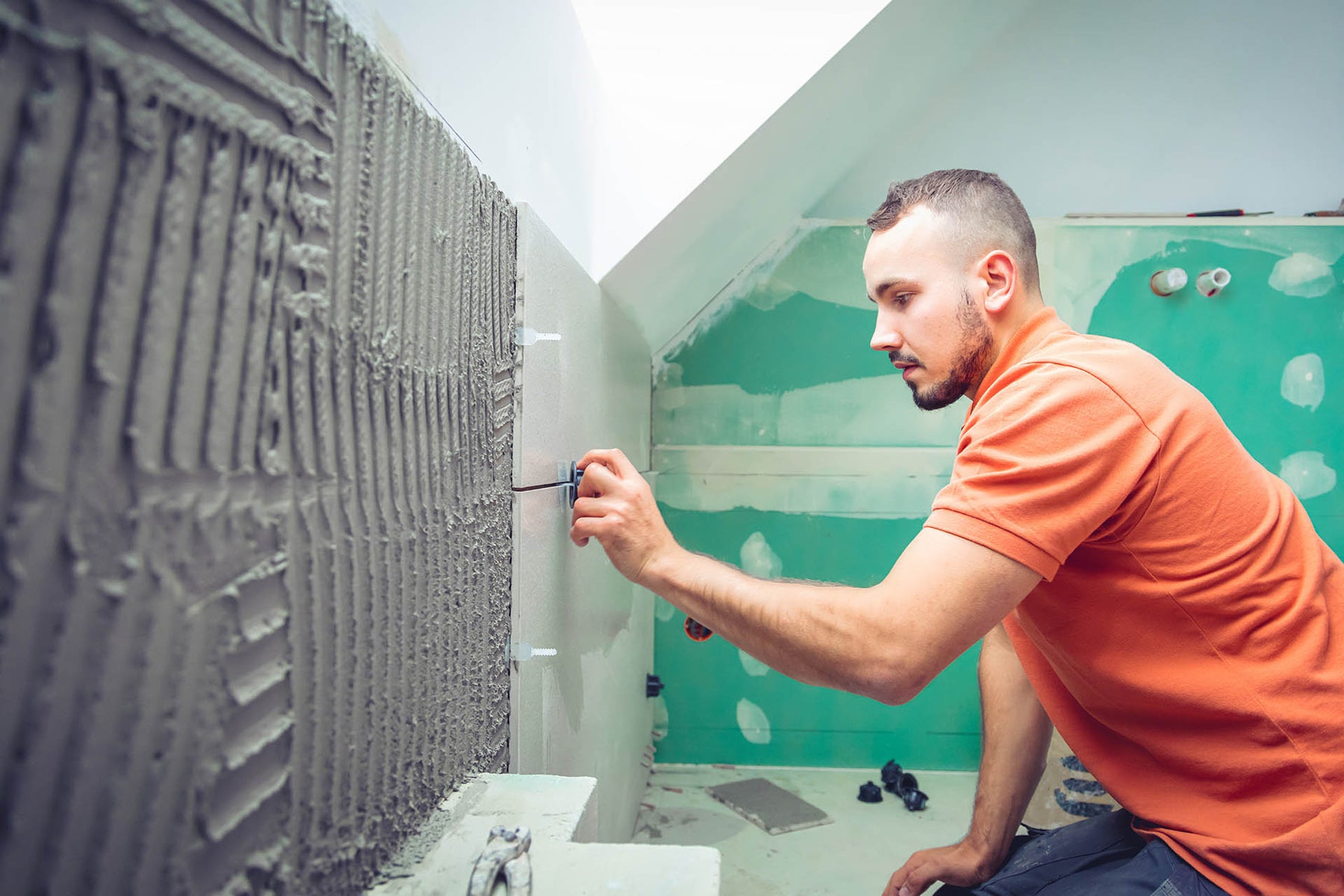
Is fixing tiles with polyurethane glue effective?
The availability of various types of adhesives for versatile use is truly enormous. When choosing a given product, you need to familiarize yourself with its composition, properties and possibilities of combining individual materials. One of the most popular preparations of this type on the market is polyurethane glue, used, among others, in the automotive, construction and industry sectors. What properties does it have? Should I buy one-component or two-component glue? Which one should you choose, for example for fixing tiles? Is fixing tiles with polyurethane glue at all possible and... effective? We dispel doubts!
What is polyurethane?
Polyurethane is polymer , which consists of two substances: polyol and isocyanate, both of which are obtained from petroleum. To produce polyurethane, these substances must be combined with appropriate stabilizers, catalysts and loosening agents. By mixing them in different proportions and subjecting them to appropriate processes, various polyurethane materials can be obtained, e.g. spandex fibers (elastin, Lycra), assembly and sealing foams or glues .
Polyurethane production is economical. The polymer is quite meltable, which makes it much easier to process. Although it has lower mechanical resistance than e.g. polyamide, it is more flexible and, after adding appropriate substances, also very hard and resistant to mechanical damage.
Polyurethane has been known since the first half of the 20th century, although it has only been used in construction and industry for several dozen years. It is cheap, easy to use and process, so it successfully replaces other materials.
Polyurethane glue
Polyurethane glue is used to join various materials: wood, metals, plastics, concrete and ceramics . Such glue can be:
- one-component , which creates a flexible joint; it is commonly used in finishing works, e.g. for the installation of thermal insulation materials (e.g. polystyrene), but also in roofing works. This glue is resistant to extreme temperatures, the range of which is specified by the manufacturer;
- two-component , with the addition of resin and hardener; depending on its composition, it may be a flexible adhesive (used for gluing smaller elements, e.g. laminates, cladding) or a hard plastic adhesive (most often used for very large structural elements);

Properties of polyurethane glue
Polyurethane adhesive is widely used due to its unique chemical and mechanical properties. The main advantages of this type of glue are:
- high weld strength
- flexibility
- perfect filling of gaps
- possibility of painting
- resistance to chemicals
- ease of application
- vibration resistance
- resistance to extreme temperatures
- moisture resistance
- high adhesive strength
- no solvents, which means no discoloration
Polyurethane adhesives of different brands and intended for gluing different elements will differ significantly from each other. Some will need to be applied hot, others will be quick drying. Some will stand out for their efficiency, while others will provide great thermal insulation. They all have one thing in common - perfect adhesion , high durability and no solvents in the composition.
The appropriate polyurethane adhesive should be selected depending on the intended use, i.e. depending on the type, size of the material and the entire structure.
Fixing tiles with polyurethane glue
Fixing tiles with polyurethane glue is possible effective . For this purpose, however, you need to choose the right type of glue, the best of which will be SikaBond T8 – flexible adhesive and insulation for tiles (capacity 5 or 10L) by Sika.
It is a one-component, flexible adhesive created especially for joining ceramic materials, e.g. tiles . Particularly recommended for gluing bathroom tiles on OSB floors, although it works great on other surfaces: concrete, wood, metal and old ceramic tiles. It can also be used to create a layer of waterproofing on the terrace or indoors. It is distinguished by excellent adhesion, flexibility and quick binding. It is waterproof, reduces tensions between the tiles and the substrate and muffles noise. Although it is not completely vapor permeable, it is one of the best tile adhesives available on the market. It can be used to attach tiles with glue on the balcony, terrace and inside the building - in the bathroom or kitchen.
How to attach tiles with SikaBond T8 polyurethane adhesive?
Each polyurethane adhesive should be used as intended and in accordance with the manufacturer's recommendations. Installing bathroom, kitchen, balcony or terrace tiles with glue is quite simple and you can cope with this task yourself. And how to do it with SikaBond T8 glue?
1. Visually assess the condition of the substrate for damage, contamination and humidity (a value on a moisture meter below 4% is appropriate).
2. The substrate should be thoroughly cleaned - dusted and vacuumed, and larger irregularities should be thoroughly sanded.
3. SikaBond T8 adhesive should be applied evenly to the surface in two layers. The first will be a waterproof barrier, and the second will be an adhesive layer. The insulation layer should be applied with a smooth trowel and left to dry for approximately 12-14 hours.
4. Spread the adhesive layer with a notched trowel.
5. The attached tiles should be pressed against the adhesive in such a way that the bottom layer of the tile is completely covered with adhesive.
6. Fixing the tiles on the applied adhesive should be completed within 45 minutes.
7. Remains of fresh, unbound adhesive should be quickly removed with a clean cloth or preparation Sika Remover .
After laying the tiles, it will be time to make the joints . And in this case, you can use a polyurethane preparation from the Sika brand. It is a Sikaflex 11 FC adhesive and a sealant that can be used for all building materials. It is available in various colors (white, beige, various shades of brown, black, gray, graphite), so it can be matched to the style of the tiles. Joints made with this sealant are resistant to external factors - they do not allow water to pass through, and at the same time they are flexible and do not crack.
A polyurethane alternative to terrace tiles
Instead of lining your balcony or terrace with ceramic tiles, you can consider an interesting alternative, also from the Sika brand. This Sikafloor 400N , a one-component polyurethane resin used as a finishing for terraces or balconies and at the same time as a waterproofing coating.
Sika polyurethane resin can be used to create a smooth floor coating (on concrete or cement screed) with anti-slip properties, resistant to UV radiation, weather conditions and abrasion. Apart from the terrace or balcony, Sika tile adhesive works great on stairs and pedestrian bridges. It withstands light and medium loads, and is also very easy to apply - it can be applied with a brush, roller or spray.
